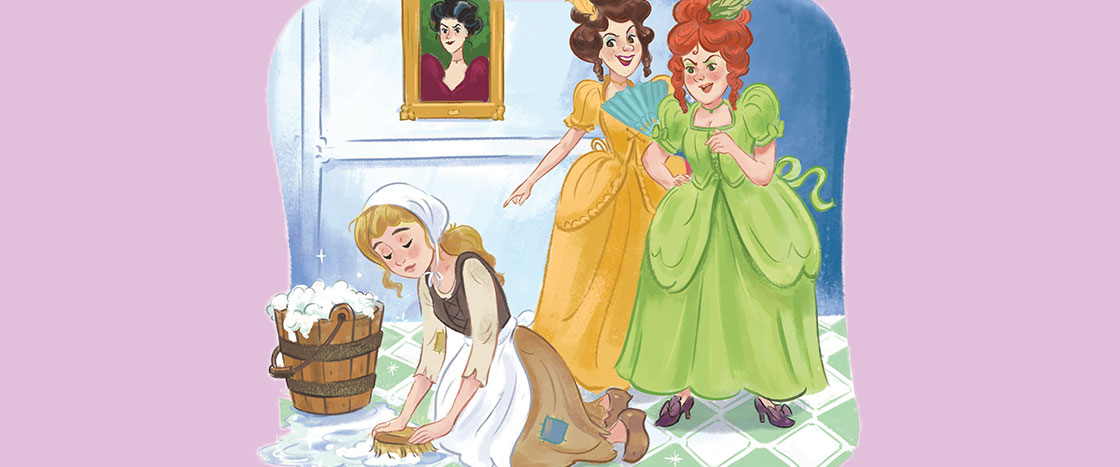Jennifer Bricking
They are even called “wicked.” They make her cook and clean all day. She has to wear rags.
Cinderella does not complain. She is kind and good.

Do you know the fairy tale “Cinderella”? You’re going to read a story about her stepsisters on page 24. Here are parts of the traditional Cinderella tale you should know before you read.
1) In the traditional story, Cinderella’s stepmother and stepsisters are mean.
Jennifer Bricking
They are even called “wicked.” They make her cook and clean all day. She has to wear rags.
Cinderella does not complain. She is kind and good.
2) The prince has a ball.
Jennifer Bricking
A ball is a big dance. Cinderella wants to go, but she has no dress to wear.
Her fairy godmother comes. She turns a pumpkin into a horse-drawn carriage. She gives Cinderella a new dress. And she gives her glass slippers to wear.
3) Cinderella must leave the ball by midnight.
Jennifer Bricking
Her carriage will turn back into a pumpkin and her dress will turn back into rags if she does not leave by midnight. She forgets! She races away and leaves a glass slipper behind.
4) The story has a happy ending.
Jennifer Bricking
The prince looks and looks for someone whose foot can fit into the glass slipper. It fits Cinderella! She and the prince get married and live happily
ever after.
How would this story change if it were told from the stepsisters’ point of view? Read their side of the story in . . . The Real Wicked One.
About the Article
Social Studies
Long ago and today; Technology changes over time
Vocabulary
carriage
ESSENTIAL QUESTION
The big question of this issue of Storyworks 2 is: What is a fairy tale?
BUILDING BACKGROUND KNOWLEDGE
This article gives kids background knowledge that will help them better understand this issue’s fiction, “The Real Wicked One,” on page 24.
1. BEFORE READING
(This video also goes with other stories in this month’s Storyworks 2.)
Preview Vocabulary (2 minutes)
2. READ THE ARTICLE (10 MINUTES)
3. AFTER READING (10 MINUTES)
ELA Focus: Quiz (10 minutes)
ELA Focus: Fairy Tale Writing (15 minutes)
Enrich the Learning: Paired Text (20 minutes)